St Helen's most memorable cricketing moments
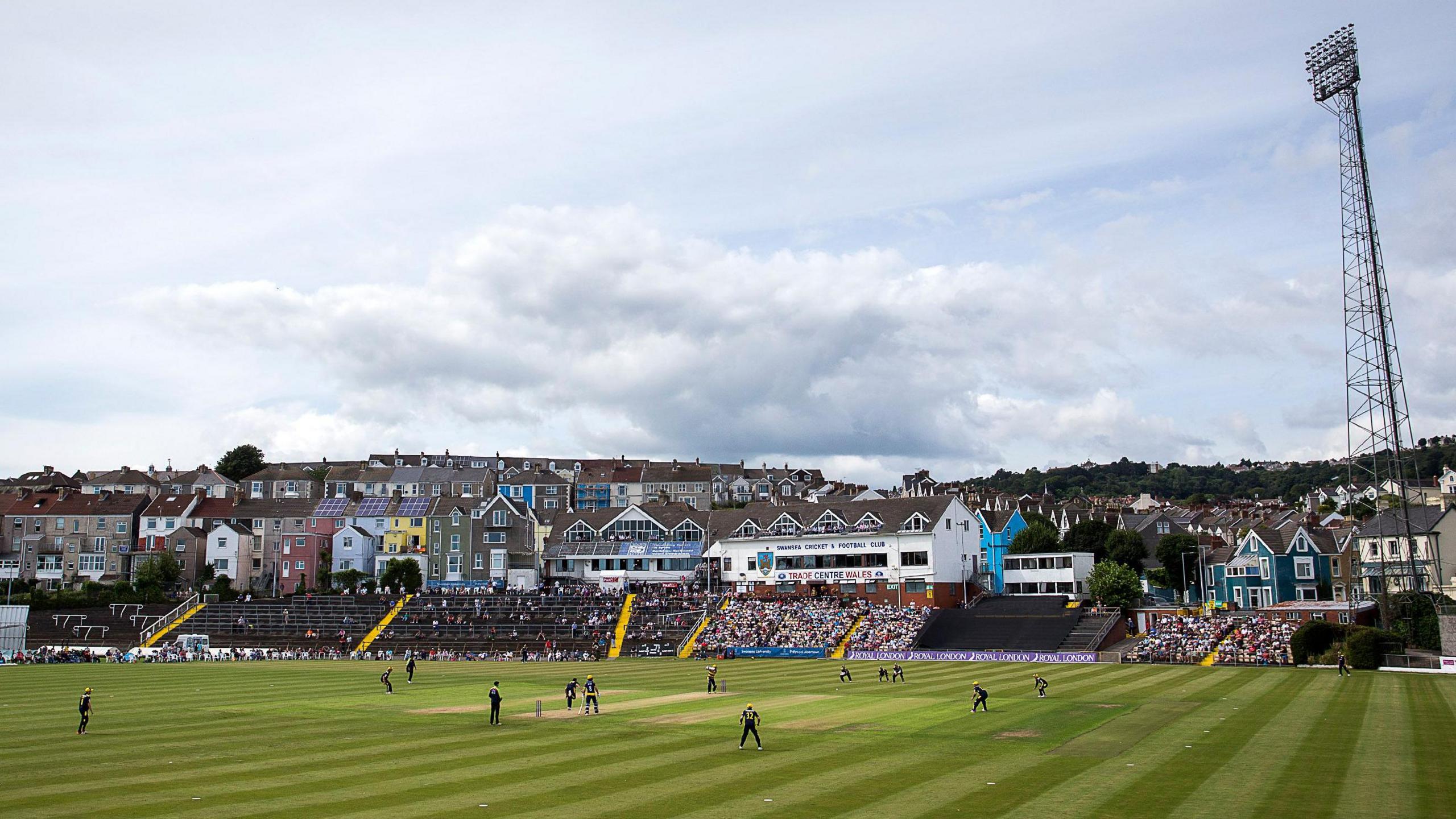
St Helen's is claimed to be home to the tallest freestanding floodlight in Europe at 150ft (45m)
- Published
This is an updated version of an article that first appeared on the BBC Sport website on 24 June, 2024.
The final ball will be bowled at St Helen's this weekend when cricket leaves the famous Swansea venue.
It is one of Wales' oldest and most iconic sporting destinations with the official opening of the cricket ground in 1875 and Wales' first home rugby international hosted at the venue seven years later.
With the Ospreys rugby team set to play at the venue from the 2026-27 season, cricket's 150-year association with the famous picturesque ground overlooking Swansea Bay is set to be a thing of the past.
St Helen's has been graced by most of the sport's greatest players with the likes of Sir Don Bradman, Sir Viv Richards, Brian Lara, Sachin Tendulkar and Shane Warne, among others, having played at the ground.
Now it will be left to a fixture in the third division of the South Wales Cricket Association, between Swansea seconds and Pontardawe firsts, to bring the curtain down on cricket at St Helen's.
BBC Sport Wales recalls some of the most memorable cricketing moments seen at St Helen's.
Six of the best
Sobers' six sixes - 57 years on
The final game will be exactly 57 years to the day that St Helen's claimed a place in cricket folklore on the last day of August 1968.
Glamorgan were playing Nottinghamshire when visiting captain Sir Garfield Sobers became the first batter to hit six sixes in an over in a first-class match.
Nottinghamshire and Sobers had reached 358-5 when Welsh bowler Malcolm Nash was handed the ball and the task of stopping the famous West Indian all-rounder.
Nash, who like Sobers could switch easily from spin to seam bowling, had already taken four wickets in the match and opened the famous over with left-arm spin around the wicket.
Sobers hammered it for a big six.
"The second ball was pretty dramatic," recalled Nash, speaking before he died in 2019. "It nearly destroyed the [nearby] pub after hitting the guttering.
"It went like a tracer bullet and was still going up when it hit the building."
The next two balls also disappeared over the boundary ropes before a 23-year-old Nash thought he had his man.
"I gave the fifth ball a little bit more air and Garry got underneath it," he said.
"Roger Davis was underneath it at long-off and caught it and fell on his backside and landed on the line.
"The previous year the rule was if you caught the ball inside the boundary and went over it was out.
"They changed the ruling in 1968 to say it was six, before going back to the original ruling the year after. Funny really."
Nash approached the last ball with pace from a short run-up around the wicket, but Sobers connected cleanly, sending his effort out of the ground and into a nearby bus stop.
The West Indian legend had confirmed his place in cricket's record books accompanied by Wilf Wooller's famous commentary: "He's done it, he's done it. My goodness it's gone all the way down to Swansea."
But what about the bowler who had just been struck for 36 in one over?
"I was a little numb immediately after the last ball," said Nash, who went on to captain Glamorgan.
"The fact it was a world record and history was made did not register.
"They declared and we walked off together and we were both smiling.
"I said he should buy me a couple of beers that evening because he could not have done it without me."
Malcolm Nash: The bowler on the end of Sobers' six sixes
- Published30 August 2018
Glamorgan legend Nash dies aged 74
- Published31 July 2019
So nice it happened twice
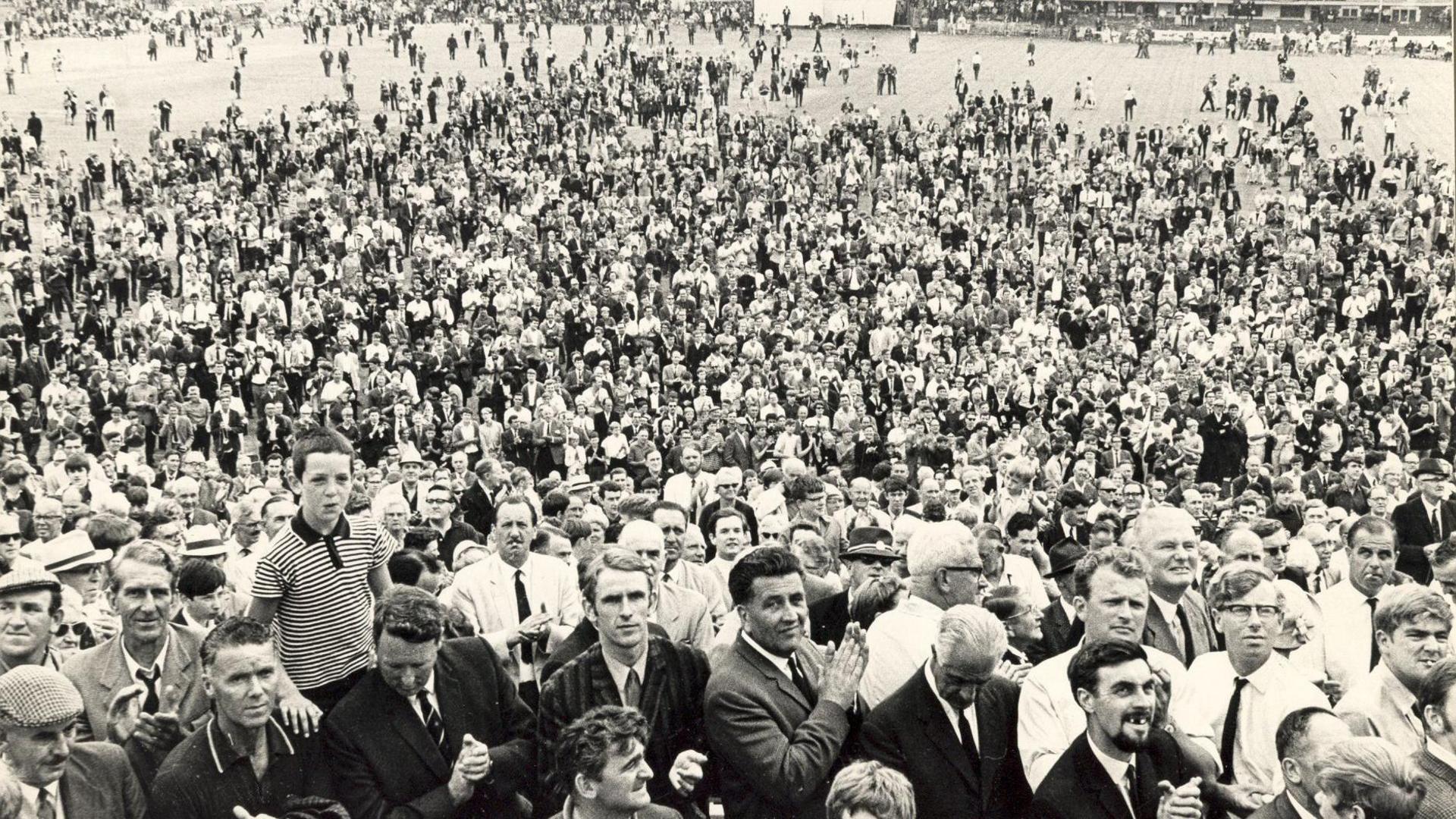
Crowds flocked to St Helen's to watch Glamorgan play Australia in 1964 and 1968
The first first-class match at St Helen's was in June 1912 when a South Wales XI played South Africa.
In 1930 and 1938, supporters packed the ground to watch Australian legend Bradman. In 1951 Glamorgan beat South Africa, their first win over a Test-playing side.
The most famous overseas visits came in 1964 and 1968. Prior to their 1964 trip to the UK only one county - the Surrey side of the 1950s - could claim to have beaten an Australian touring team since 1912.
When they arrived in Swansea, Australia, led by captain Bobby Simpson, had maintained their unbeaten record in county games and were already one-up in the Test series against England.
Few in the St Helen's crowd of around 20,000 would have fancied a home win when the Welsh county were bundled out for 197 in their first innings.
But, after a short shower had freshened up the Swansea wicket, Glamorgan produced a magnificent spell of bowling as Australia slumped to 39-6.
Glamorgan polished off Australia for 101 then batted again and left the visitors with a tricky target of 268 before the hosts sealed a 36-win success

Don Shepherd celebrates Glamorgan's victory against Australia
Four years later Glamorgan made history, becoming the first county team to defeat the Australians on consecutive tours.
Captain Tony Lewis was taken ill shortly before the match, meaning trusty deputy Don Shepherd stepped up to lead Glamorgan
After winning the toss, Glamorgan were indebted to a magnificent 99 from opening batter Alan Jones as they made 224.
As in 1964, the Australians lost cheap wickets and yielded a first-innings lead of 114 to the Welsh county.
Glamorgan extended the lead to 364 before Shepherd declared and, with St Helen's packed to the rafters, the Welsh county enjoyed another famous day with a 79-run win.
International matches
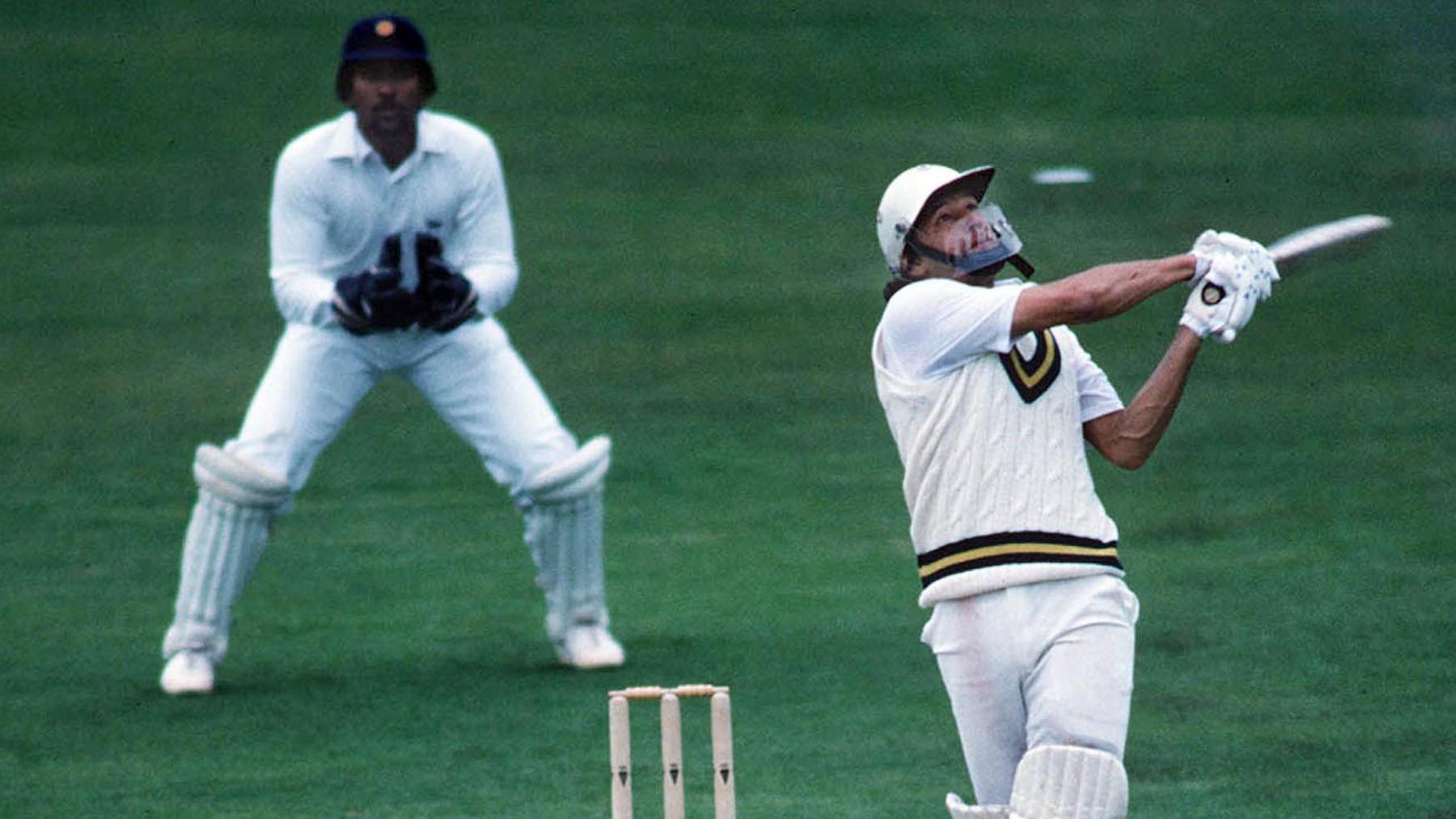
Imran Khan was part of the Pakistan side against Sri Lanka in 1983 that played at St Helen's
St Helen's became the first venue in Wales to host a one-day international in 1973.
A crowd of just over 10,000 watched as a century from Dennis Amiss led an England side packed with stars including Geoffrey Boycott, Ray Illingworth, Tony Greig and Derek Underwood to a seven-wicket victory.
Cyril Walters, who in 1934 had become the first Welshman to captain England in Test cricket, presented Amiss with the man-of-the-match award.
A decade later, the 1983 Cricket World Cup was staged in England and Wales. St Helen's was the only venue to be used in Wales, hosting one game with Pakistan defeating Sri Lanka by 50 runs in a 60-over match
It was the final international cricket match played between two nations at the ground, though in 1989 St Helen's staged a 40-over day-night match between Glamorgan and a Rest of the World XI under the floodlights.
Three is the magic number
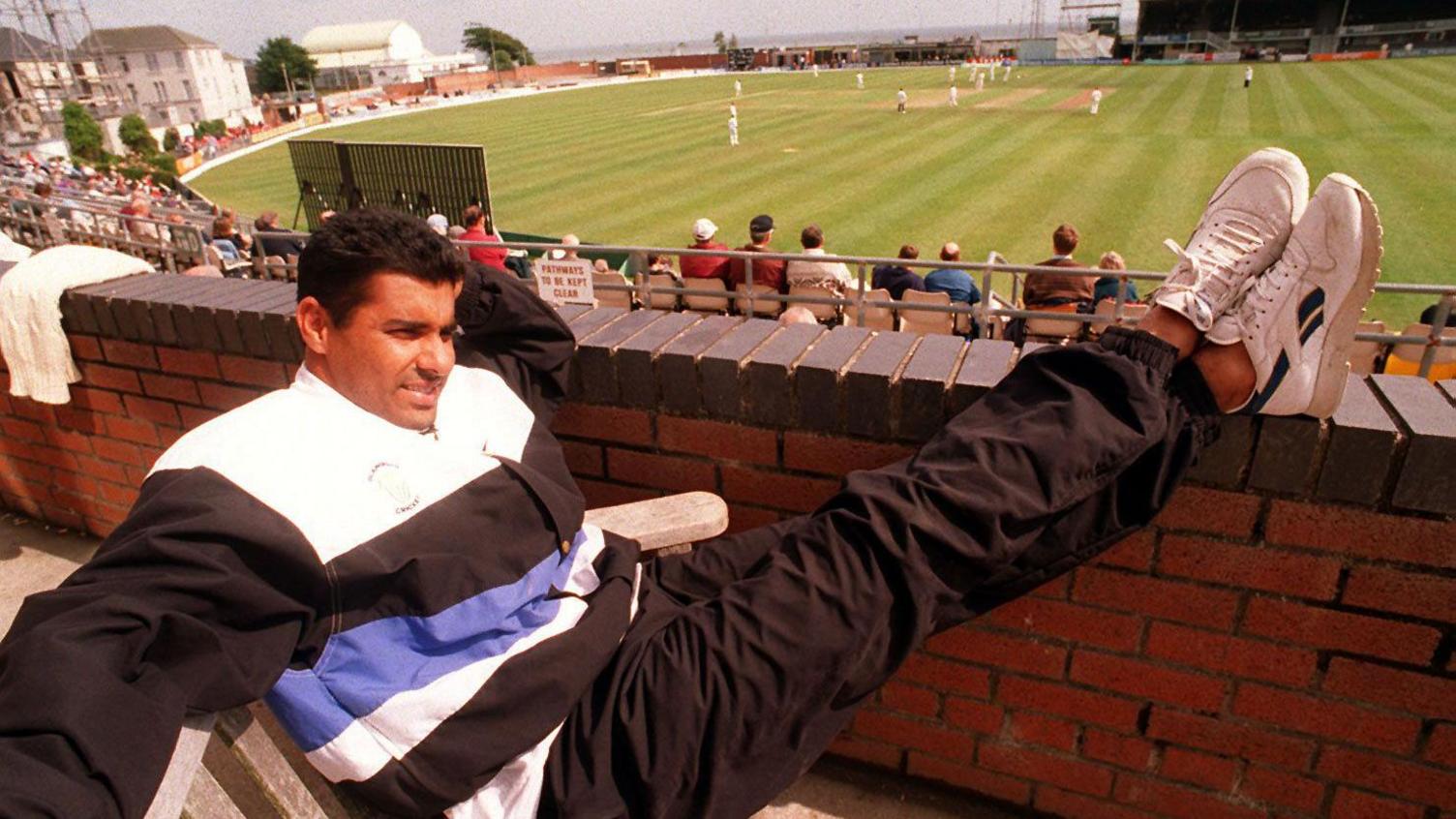
Waqar Younis went to to coach Pakistan after his playing days were over
St Helen's first staged County Championship cricket in May 1921 and continued as an outground for Glamorgan until 2019.
During that 98-year period the ground played its part in the county's success, including three Championship titles in 1948, 1969 and, most recently, 1997.
Swansea hosted two first-class fixtures in 1997 as Glamorgan won their first title in 28 years with victories against both Sussex and Gloucestershire.
Glamorgan's overseas player for 1997 was one of the world's all-time great fast bowlers, Waqar Younis.
In the first of those Championship matches at St Helen's, the Pakistan legend took a match-winning eight wickets for 17 runs as Sussex were bowled out for 54 and 67, Glamorgan winning by 234 runs at the end of June.
The following week Gloucestershire were beaten by 10 wickets in Swansea with the Welsh county going on to seal the title with victory over Somerset in the final game at Taunton in September.
Personal milestones
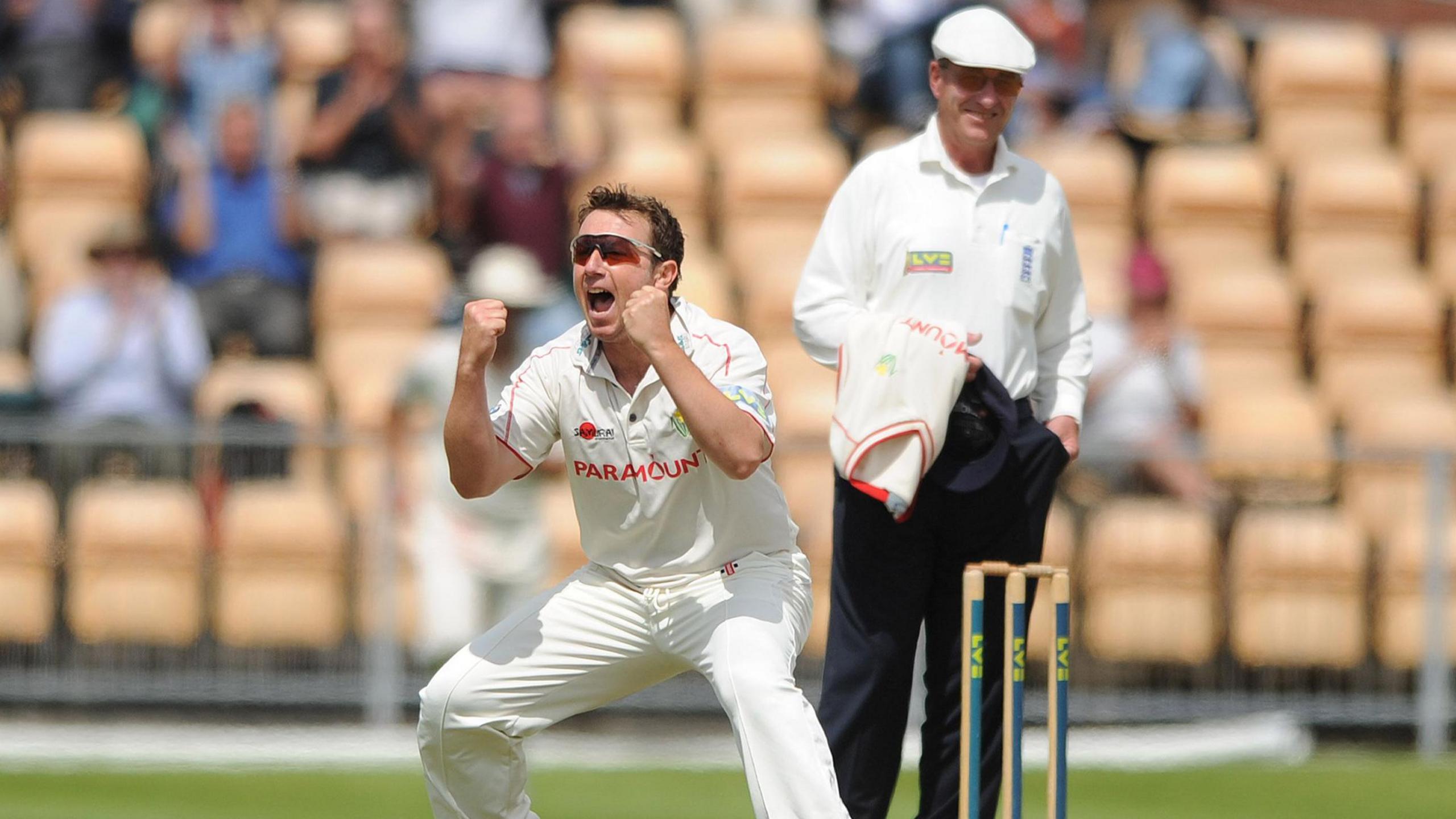
Robert Croft followed Don Shepherd, Jack Mercer and Johnnie Clay by taking 1,000 first-class wickets for Glamorgan
Leading Glamorgan to that 1997 title success was skipper - and future coach - Matthew Maynard, 12 years after he made a remarkable first-class debut for the Welsh county at St Helen's in 1985.
Maynard, aged just 19, hit three successive sixes against Yorkshire to bring up his 100 and become the youngest Glamorgan player to hit a Championship century.
Some of Maynard's Glamorgan team-mates were more synonymous with St Helen's - Robert Croft, David Hemp and Tony Cottey started their cricketing journey with Swansea.
It was fitting that Croft became the fourth Glamorgan bowler to reach 1,000 first-class wickets for the Welsh county at the ground in July 2010.
Don Shepherd was the first onto the pitch, along with another Glamorgan great Peter Walker, to congratulate Croft, bringing the spinner a glass of champagne.
Shepherd, who was Glamorgan's record wicket-taker with 2,174 (and 2,218 first-class victims in total) was the original local Swansea boy who excelled at St Helen's.
His remarkable record at his beloved home was 464 wickets taken at an average of just 20 in 125 first-class matches, which included 30 five-wicket hauls.
His best bowling performance in Swansea of nine for 48, against Yorkshire in 1965, came after Glamorgan team-mate Jim Pressdee had taken nine victims in the first innings.
There are so many more memories that could be recalled from Swansea's cricketing old lady as the final bell will be rung for this sport at St Helen's.
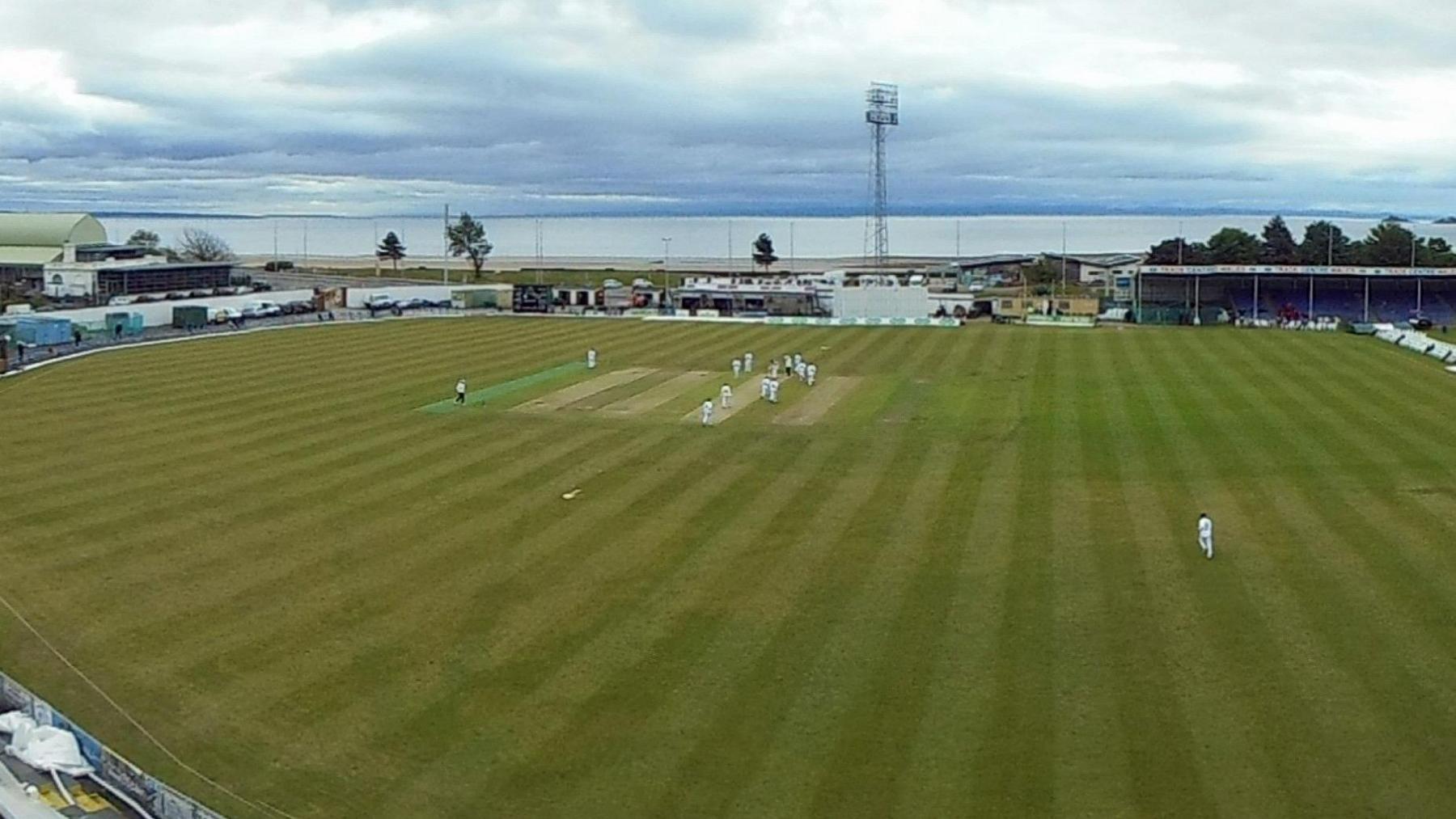
Glamorgan's final county championship match at St Helens was in 2019